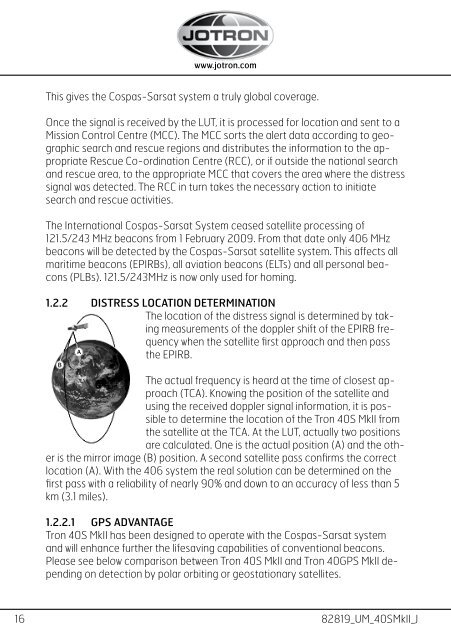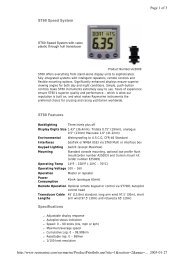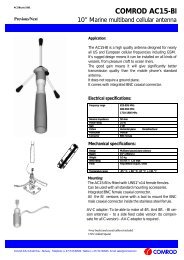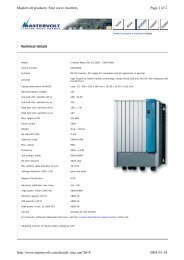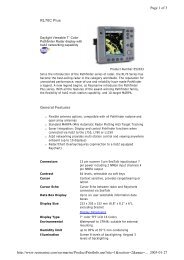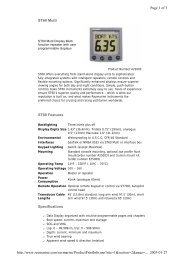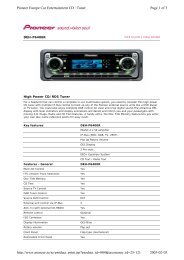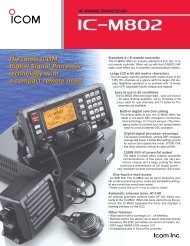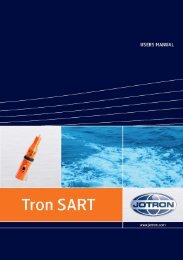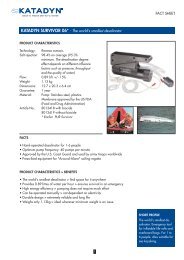TRON40GPS - Regina
TRON40GPS - Regina
TRON40GPS - Regina
You also want an ePaper? Increase the reach of your titles
YUMPU automatically turns print PDFs into web optimized ePapers that Google loves.
www.jotron.com<br />
This gives the Cospas-Sarsat system a truly global coverage.<br />
Once the signal is received by the LUT, it is processed for location and sent to a<br />
Mission Control Centre (MCC). The MCC sorts the alert data according to geographic<br />
search and rescue regions and distributes the information to the appropriate<br />
Rescue Co-ordination Centre (RCC), or if outside the national search<br />
and rescue area, to the appropriate MCC that covers the area where the distress<br />
signal was detected. The RCC in turn takes the necessary action to initiate<br />
search and rescue activities.<br />
The International Cospas-Sarsat System ceased satellite processing of<br />
121.5/243 MHz beacons from 1 February 2009. From that date only 406 MHz<br />
beacons will be detected by the Cospas-Sarsat satellite system. This affects all<br />
maritime beacons (EPIRBs), all aviation beacons (ELTs) and all personal beacons<br />
(PLBs). 121.5/243MHz is now only used for homing.<br />
1.2.2 DISTRESS LOCATION DETERMINATION<br />
The location of the distress signal is determined by taking<br />
measurements of the doppler shift of the EPIRB frequency<br />
when the satellite first approach and then pass<br />
the EPIRB.<br />
The actual frequency is heard at the time of closest approach<br />
(TCA). Knowing the position of the satellite and<br />
using the received doppler signal information, it is possible<br />
to determine the location of the Tron 40S MkII from<br />
the satellite at the TCA. At the LUT, actually two positions<br />
are calculated. One is the actual position (A) and the other<br />
is the mirror image (B) position. A second satellite pass confirms the correct<br />
location (A). With the 406 system the real solution can be determined on the<br />
first pass with a reliability of nearly 90% and down to an accuracy of less than 5<br />
km (3.1 miles).<br />
1.2.2.1 GPS ADVANTAGE<br />
Tron 40S MkII has been designed to operate with the Cospas-Sarsat system<br />
and will enhance further the lifesaving capabilities of conventional beacons.<br />
Please see below comparison between Tron 40S MkII and Tron 40GPS MkII depending<br />
on detection by polar orbiting or geostationary satellites.<br />
16<br />
82819_UM_40SMkII_J


